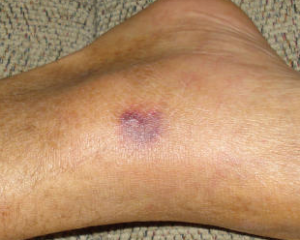ST. PETERSBURG, Fla. Patty Konietzky thought the small purple lesion on her husband’s ankle was a spider bite. But when the lesion quickly spread across his body she knew something wasn’t right. After a trip to the hospital and a day and a half later, Konietzky’s 59-year-old husband was dead.
The diagnosis: vibrio vulnificus, an infection caused by a bacterium found in warm salt water. It’s in the same family of bacterium that causes cholera. So far this year, 31 people across Florida have been infected by the severe strain of vibrio, and 10 have died.
In Mobile, Ala., this week health department officials said two men with underlying health conditions were diagnosed with vibrio vulnificus in recent weeks. One of the men died in September and the other is hospitalized. Both men were tending to crab traps when they came into contact with seawater.
State health officials say there are two ways to contract the disease: by eating raw, tainted shellfish – usually oysters – or when an open wound comes in contact with bacteria in warm seawater.
While such occurrences could potentially concern officials in states with hundreds of miles of coastline and economies largely dependent on ocean-related tourism, experts say the bacteria is nothing most people should worry about. Vibrio bacteria exist normally in salt water and generally only affect people with compromised immune systems, they say. Symptoms include vomiting, diarrhea and abdominal pain. If the bacteria get into the bloodstream, they provoke symptoms including fever and chills, decreased blood pressure and blistering skin wounds.
But there’s no need to stop swimming in the Gulf of Mexico, says Diane Holm, a spokeswoman for the state health department in Lee County, which has had a handful of cases that included one fatality this year.
“This is nothing abnormal,” she said. “We don’t believe there is any greater risk for someone to swim in the Gulf today than there was yesterday or 10 years ago.”
There have been reports this year in Gulf states of other waterborne illnesses, but they are rare. In fresh water, the Naegleria fowleri amoeba usually feeds on bacteria in the sediment of warm lakes and rivers. If it gets high up in the nose, it can get into the brain. Cases have been reported in Louisiana, Arkansas and in Florida, including the August death of a boy in the southwestern part of the state who contracted the amoeba while knee boarding in a water-filled ditch.
Dr. James Oliver, a professor of biology at the University of North Carolina in Charlotte, has studied vibrio vulnificus for decades. He said that while Florida has the most cases of vibrio infection due to the warm ocean water that surrounds the state, the bacteria is found worldwide, generally in estuaries and near the coast.
“It’s normal flora in the water,” he said. “It belongs there.”
The vast majority of people who are exposed to the bacteria don’t get sick, he said. A few people become ill but recover. Only a fraction of people are violently ill and fewer still die; Oliver said many of those people ingest tainted, raw shellfish.
Oliver and Florida Department of Health officials say people shouldn’t be afraid of going into Florida’s waters, but that those with suppressed immune systems, such as people who have cancer, diabetes or cirrhosis of the liver, should be aware of the potential hazards of vibrio vulnificus, especially if they have an open wound.
Holm said nine people died from vibrio vulnificus in Florida in 2012, and 13 in 2011, so this year’s statistics aren’t alarming. What’s different, she said, was that victims’ families are speaking to the news media about the danger.
